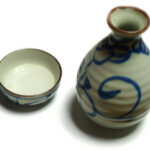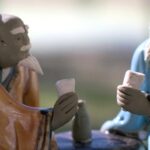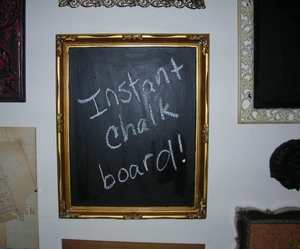Chalkboard paint is a popular method of creating a usable, custom finish on a variety of surfaces. Using first-hand experience, this article will explain the benefits, obstacles, how to use and a few tricks of using chalkboard paint on your projects.
Chalkboard paint can be found in two different containers: spray can or paint bucket. For the sake of ease, the spray can is the easiest way to store and apply the paint, while a paint can is the most cost effective. Select your type of application in regard to how much painting you plan on doing. Want to do all of the cabinets in your kitchen? Go for the paint bucket. Want to do just one or two? Go for the spray can.
Selection
Start by choosing what surface you’re going to be working on. All wood will need to be sanded until very smooth and all finishes must be removed prior to beginning. Wood surfaces benefit from wood putty, which dries hard and makes a smooth, sandable surface that fills in the wood fibers. This will make writing on the paint much easier. Smooth surfaces, such as metal, should be sanded with fine grit sandpaper to allow the paint to have some texture to grip. As with all painting projects, you want to get to the bare material before painting.
Getting Started
Set up your space with some spare newspaper, in a well-ventilated area, with all of your tools arranged. Try to find a space with as little dust as possible. If this is a work shop or other studio area, consider vacuuming where you’re working to minimize particulate matter.
Next, you’ll want to clean your surface thoroughly. Because this is a working surface, one you’re writing on, any bumps or ridges will make writing difficult, much like trying to write on paper when it’s sitting on a rough surface. The key here is to use as little water as possible with a damp rag to wipe down your work surface. Then, allow the piece to dry completely. Sealing in moisture will not allow the paint to bond properly.
Ready to Paint
Now is the time to consider if you’re going to prime your surface first or not. Paint primer will make the surface smoother, which benefits when dragging chalk across the finish, and will create a tough medium between the wood or metal and the chalkboard paint. I recommend using a primer that is bright, so that you can more easily see where your top coat is thin or missing. This is a common trick when painting cars. Follow the directions on your primer can, but generally most primers can be top-coated within an hour, or after 24 hours. Just make sure it isn’t still wet when you decide to start laying on the chalkboard paint.
Finally!
You are ready to apply your paint. If you’re using a spray can, start your “strokes” by spraying to the side of the piece, then sweep your arm all the way across, making sure you don’t let the paint build up and pool. Don’t stop spraying until you’ve moved past the piece. This method requires that you neither start nor stop spraying while the can is directed at the surface you’re painting. This ensures that you get a smooth, even coat. Do this all the way across the piece, overlapping your “strokes” by just a bit. It will take some trial and error, but it will get easier as you go.
If you’re using paint from a can, use a foam brush, as these tend to leave the least and smallest streaks when trying to create a smooth finish. Additionally, cleaning chalkboard paint out of a traditional brush is very difficult, and the disposability of a foam brush can save a lot of headaches.
Now look over your piece for anywhere that the paint looks thin. This is where the primer coat is useful.
Now Wait
Now is the hardest part. You have to wait a long time before you can use your surface (at least 24 hours), and there are some caveats to letting chalkboard paint dry. The finish has a tendency to run, so try to keep your surface as parallel to the ground as possible. Also, do NOT put the piece under a heat source or in direct sunlight to speed up the process. The paint can and will bubble up and break away, forcing you to re-coat and wait again.
Ready for Use
Now you’re ready to use your painted surface. Almost. Make sure you’re using calcium-based chalk, not clay, as clay chalk can tear the surface of your chalkboard paint. You can tell the difference because calcium-based chalk is powdery, while clay-based chalk has a more creamy consistency when used.
Take a piece of chalk and lay it on its’ side against your chalkboard surface and rub it all over, making sure you get every square inch. This fills in the tiny ridges in the paint and creates a sort of dry lubricant between the paint and the chalk. Now erase the powder and wipe the board with a barely damp cloth. Now you’re ready to use your chalkboard painted surface.
Now the Best Part
Now that you know how to use chalkboard paint, the fun begins. Try looking at second-hand stores for surfaces to be painted (inexpensive platters make great signs), and at yard sales. A painted cabinet door becomes a great place for shopping lists and notes to the rest of the house. Enjoy your new knowledge, and have fun with it. That’s kind of the point, right?





